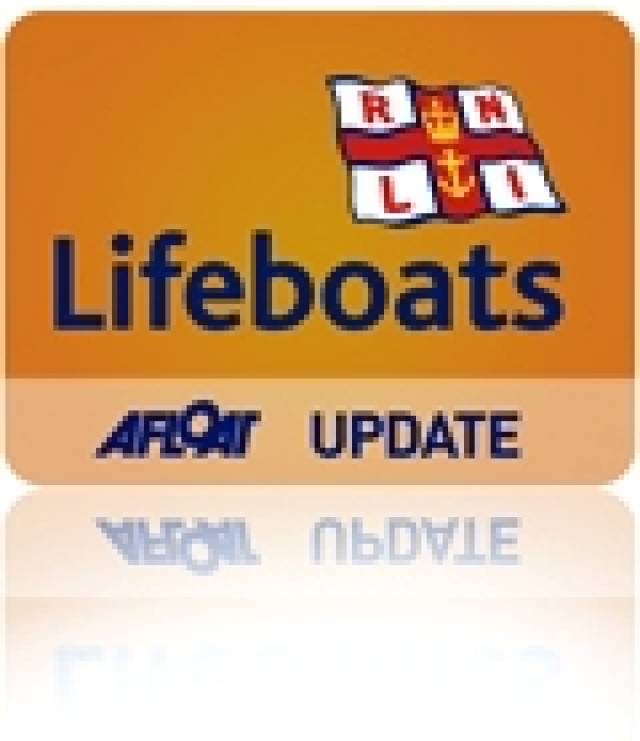#rnli – Both the Dun Laoghaire RNLI all weather and inshore lifeboats were launched yesterday evening (Tuesday 22 July) when three teenage girls, who were walking on Sandymount Strand on Dublin Bay, became disorientated when a heavy fog rolled in and they became cut off by the incoming tide. The teenagers found themselves surrounded by water with little visibility and temperatures dropping.
The Dun Laoghaire inshore lifeboat was launched at 6.22pm with the all-weather lifeboat launching a few minutes later. The girls had called for help on their mobile phone when they realised they were lost and surrounded by water on all sides. Both the Gardaí and the Dun Laoghaire Coast Guard Unit joined in the search from the shore.
The lifeboat crew were operating with only one hundred metres of visibility in front of them. Approximately ten minutes after the lifeboat crews had launched, the girls heard the noise from the shore based teams that were searching for them and they were able to answer them. Dun Laoghaire RNLI's inshore lifeboat was alerted to their position by the Coast Guard from the shore and lifeboat crews transferred the three girls onto the inshore lifeboat. They were all extremely cold and were met at the lifeboat station by paramedics, to be assessed.
Commenting on the callout Dun Laoghaire RNLI Coxswain Mark McGibney said, 'The teenagers were out for a walk when they were caught out by a rolling fog and a fast incoming tide. They lost their bearings and were quickly surrounded by rising water. Thankfully they stayed calm and called for help. Our lifeboats were launched in minutes and assistance was also given by the Gardaí and local Coast Guard. If they had walked in the wrong direction they could have quickly become out of their depth, instead they made the right decision and called for help. In this case thankfully it ended well.'
































































